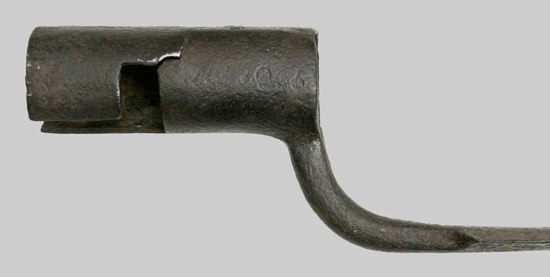 The earliest socket bayonets, like the ca. 1715 Long Shank Dutch/Liege Socket Bayonet pictured at right, had a simple I-mortise that engaged a bayonet mounting stud on top of the musket barrel. (When located on top, the bayonet stud is often mistaken as a front sight. Smoothbore muskets of this period generally did not have any sights.)
The earliest socket bayonets, like the ca. 1715 Long Shank Dutch/Liege Socket Bayonet pictured at right, had a simple I-mortise that engaged a bayonet mounting stud on top of the musket barrel. (When located on top, the bayonet stud is often mistaken as a front sight. Smoothbore muskets of this period generally did not have any sights.)
Around 1740, a third leg was added to the mortise, making it into an L-mortise. Many earlier bayonets had the their I-mortise converted to an L-mortise during their service life. The Early Colonial American Socket Bayonet pictured below is an early example made with a L-mortise. Note that the mortise is on the opposite side of the socket from the example above. This mortise is cut for a bayonet stud on the bottom of the barrel.
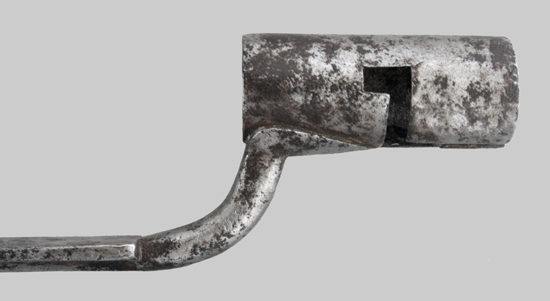
The unbridged mortise had a tendency to spread apart, as illustrated by the cracked socket on the Long-Shanked Dutch/Liege Socket Bayonet pictured above. As one might imagine, the bayonet had a tendency to work loose during firing or bayonet combat. A collar and bridged mortise came into use around 1750. Many earlier bayonets had a collar and bridge added during their service life. The Colonial American Socket Bayonet pictured below an early example made with a collar and bridged mortise, cut for a bottom stud.
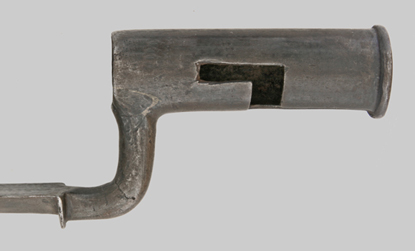
Countries experimented with a wide variety of spring-catches to better secure the bayonets. Some spring-catches were attached to the bayonets, while others were part of the musket. The springs were prone to breakage, which just created another problem. The Danish M1854 bayonet pictured below has a unique locking spring designed by Johan Christian Wilken Kyhl (pronounced, 'cool'), first introduced in 1794.
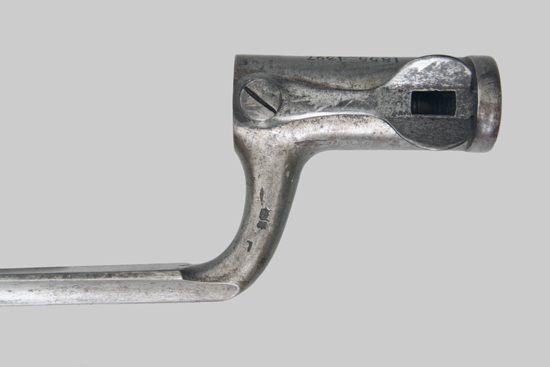
However, the French again proved to be the innovators when, ca. 1768, they introduced the basal locking ring. The basal locking ring was simple and had no breakable parts. As its name suggests, a ring was placed around the base of the socket to positively secure the bayonet around the mounting stud. The socket and locking ring of the Bavarian socket bayonet pictured below is copied from the French M1771 socket bayonet.
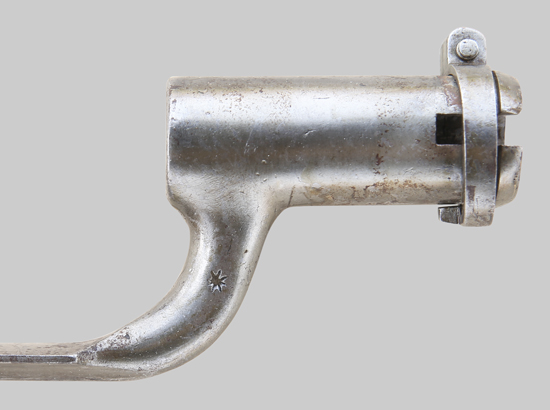
By 1777, the French found that locating the locking ring in the middle of the socket a superior design. The U.S. M1835 bayonet pictured below is an example of the medial locking ring. Initially slow to catch on, from 1840 onward, nearly all new socket bayonets produced incorporated a locking ring and the vast majority used a medial locking ring.
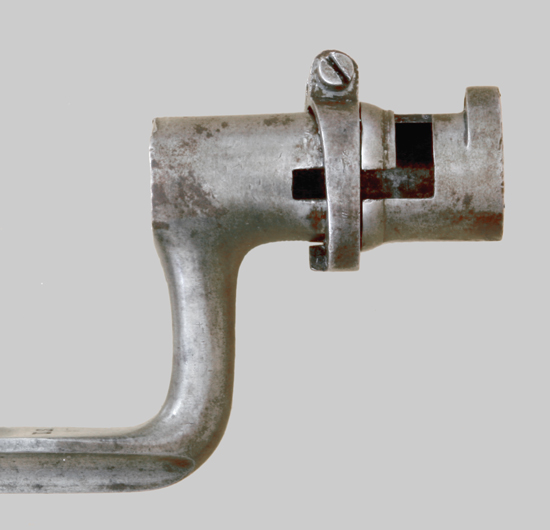
Before adopting the medial locking ring, the U.S. opted for a simpler improvement, the T-mortise. The bayonet socket with T-mortise was developed by Springfield Armory Master Armorer, Andrew Wilson, of New York. After leaving Armory employment, Wilson applied for a patent on his bayonet socket, which was granted in June 1814.
In 1818, after a year of negotiations, the U.S. Government paid Wilson $3,000 for the right to use his patent, which was estimated to reduce the cost of each bayonet by 25 cents vs. adopting a medial locking ring. "Wilson's Improvement" was introduced with the M1816 musket bayonet and also used on the M1819 Hall's Breechloading Rifle bayonet (pictured below). Considering that the U.S. manufactured more than 600,000 bayonets from 1818–1844 using Wilson's patent, the Government's $3,000 investment saved over $150,000.
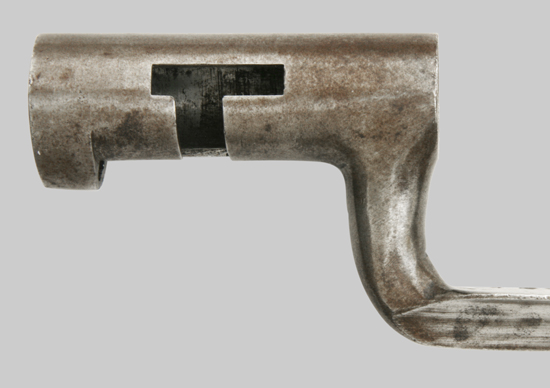
One final twist to the story of the T-mortise occured in 1820. Wilson became aware that The Virginia Manufactory of Arms was producing bayonets that incorporated his patent. He offered to license the State of Virginia to use his patent and requested compensation of $1,000 for the unauthorized use of his patent. However, The Virginia Manufactory ceased operation in 1821 without any compensation being paid.
Back: 1704—The Bayonet Supercedes the Pike
Return to History of the Bayonet Index
© Ralph E. Cobb 2009 All Rights Reserved



